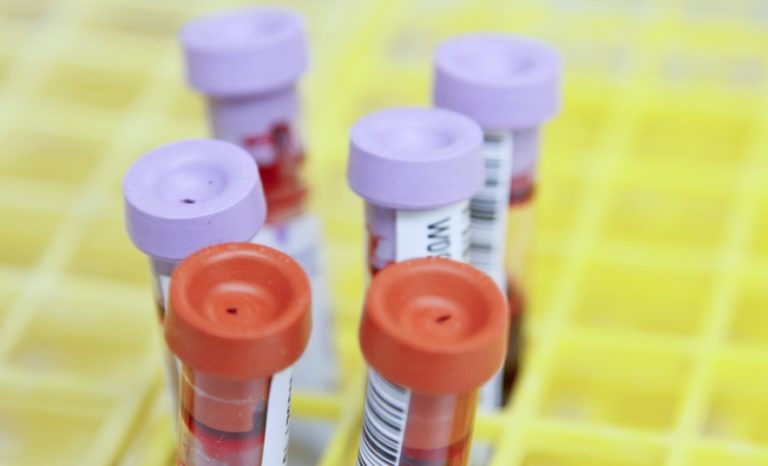August 06 2021: “The U.S. FDA has approved Nexviazyme® (avalglucosidase alfa-ngpt) for the treatment of patients one year of age and older with late-onset Pompe disease, a progressive and debilitating muscle disorder that impairs a person’s ability to move and breathe.
Nexviazyme is an enzyme replacement therapy (ERT) designed to specifically target the mannose-6-phosphate (M6P) receptor, the key pathway for cellular uptake of enzyme replacement therapy in Pompe disease.
Nexviazyme has been shown in clinical trials to provide patients with improvements in respiratory function and walking distance.
“Pompe disease is a debilitating and progressive condition that significantly inhibits mobility and breathing,” said Bill Sibold, Executive Vice President of Sanofi Genzyme.
“For decades, we’ve made it our responsibility to research how to target the M6P receptor, the key pathway for cellular uptake of enzyme replacement therapy.
Nexviazyme is a potential new standard of care for people living with late-onset Pompe disease and delivers on our promise to pursue medicines for patients living with rare diseases.”
Pompe disease affects an estimated 3,500 people in the United States and can present as infantile-onset Pompe disease (IOPD), the most severe form of Pompe disease with rapid onset in infancy, and late-onset Pompe disease (LOPD), which progressively damages muscles over time.
LOPD symptoms may present at any age. However, due to the wide spectrum of clinical presentations and progressive nature of the disease, it can take seven to nine years before patients receive an accurate diagnosis.
As the disease progresses, people with LOPD may require mechanical ventilation to help with breathing or a wheelchair to assist with mobility.
Targeted delivery to clear glycogen in muscle cells
Pompe disease is caused by a genetic deficiency or dysfunction of the lysosomal enzyme acid alpha-glucosidase (GAA), which results in build-up of complex sugars (glycogen) in muscle cells throughout the body.
The accumulation of glycogen leads to irreversible damage to the muscles, including the diaphragm that supports respiratory function and skeletal muscles that affect mobility, functional endurance and breathing.
The key pathway to transport GAA enzyme into the lysosomes in the cell is through the M6P receptor.
Nexviazyme is specifically designed to target M6P to improve cellular enzyme uptake and enhance glycogen clearance in target tissues with an approximate 15-fold increase in M6P content compared to alglucosidase alfa, the comparator arm in the pivotal study.
Nexviazyme demonstrated improvements in pivotal study
Nexviazyme has demonstrated improvements for people living with late-onset Pompe disease.
In the pivotal Phase 3 trial (COMET), Nexviazyme showed improvements in respiratory function and walking distance measures in people with LOPD and established its safety profile.
“Nexviazyme is a new and exciting therapeutic option for people with late-onset Pompe disease,” said Mazen M. Dimachkie, MD, FAAN, FANA, Professor of Neurology, Chief of the Neuromuscular Division and Executive Vice Chair of the Department of Neurology at the University of Kansas Medical Center.
“The Phase 3 study results showed meaningful improvements in respiratory function and walking distance, which are impactful in this serious condition.”
Results from the COMET study comparing Nexviazyme to alglucosidase alfa in LOPD included:
- When compared to baseline, patients treated with Nexviazyme had a 2.9-point improvement (SE=0.9) in forced vital capacity (FVC) percent-predicted at Week 49, the study’s primary endpoint.
Patients treated with Nexviazyme had a 2.4-point greater improvement in FVC percent-predicted compared to patients treated with alglucosidase alfa at Week 49 meeting the measurement of non-inferiority (p=0.0074; 95% CI, -0.13, 4.99).
Statistical superiority of Nexviazyme over alglucosidase alfa was not achieved (p=0.06). - A key secondary endpoint in the trial measured functional endurance with the 6-minute walk test (6MWT). When compared to baseline, patients treated with Nexviazyme walked 32.2 meters farther (SE=9.9) at Week 49.
Patients treated with Nexviazyme walked 30 meters farther (95% CI, 1.33, 58.69) than patients treated with alglucosidase alfa at Week 49. Per the hierarchy of the study protocol, formal statistical testing for all secondary endpoints was not conducted. - During the double-blind active-controlled period of 49 weeks, serious adverse reactions were reported in two (2%) patients treated with Nexviazyme and in three (6%) patients treated with alglucosidase alfa.
The most frequently reported adverse reactions (>5%) in Nexviazyme-treated patients were headache, pruritus (itching sensation), nausea, hives and fatigue. - Infusion associated reactions were reported in 13 (25%) of the Nexviazyme-treated patients and in 16 (33%) of patients treated with alglucosidase alfa.
Infusion associated reactions reported in more than one patient on Nexviazyme were mild to moderate and included headache, diarrhea, itching, hives, and rash.
None of the infusion associated reactions were severe.
Nexviazyme, a new ERT for late-onset Pompe disease
Nexviazyme is administered as a monotherapy ERT every two weeks.
The recommended dose is based on body weight (20 mg/kg for LOPD patients ≥30 kg or 40 mg/kg for LOPD patients <30 kg) and is administered incrementally via intravenous infusion.
Nexviazyme is expected to be available in the U.S. in the coming weeks.”
https://www.sanofi.com/en/media-room/press-releases/2021/2021-08-06-17-42-21-2276588











